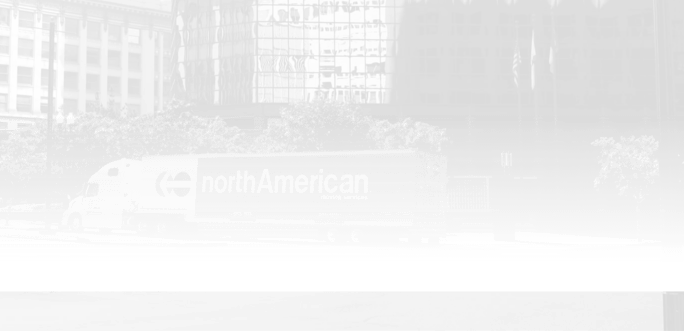

COVID-19 has changed how we work and live for a year now. As companies and individuals alike do their best to remain flexible, we must also acknowledge the difficulty in making and implementing both policies and significant life decisions with so much unknown about how this pandemic will shape our future. In the world of relocation, we have a particular interest in how companies will adapt to this surge in remote work and what it will mean for their relocation practices, programs, and how they utilize relocation as an incentive in an increasingly flattened labor market. While no one can predict the future, especially in these times, what we can do is look to the data available about what has happened thus far.
While it could be easy to assume that the pandemic and its resulting restrictions may have meant that few people moved in 2020, our consumer data and the data from other research centers showed that was not the case. Before we discuss what the data did show, it is important for us to prime the discussion by saying that the pandemic affected people in different and, at times, polarizing ways. A multitude of factors such as the type and security of their jobs, the health status of them and their family, and how they viewed the pandemic itself were all likely factors in creating this variance in reaction and response. The foreignness of operating in a pandemic-ridden world meant - and means - uncertainty. How people and companies choose to navigate that uncertainty, has and will likely continue to vary widely.
In using our consumer move data from last year, alongside the results of research we commissioned on the attitudes and motivations of moving itself in 2020, we hope to provide HR professionals and those who play a role in their company’s recruitment
and relocation programs valuable insights about how the pandemic may continue to shape both how they conduct their relocations and where their talent may be looking to relocate.
People Really Moved Last Year:
As previously mentioned, despite the pandemic and perhaps as a direct result of it, people still moved last year and in the cases of certain cities, they moved in record numbers. In densely populated and harder-hit areas such as New York, San Francisco, Los Angeles, Chicago, Washington D.C., and Houston, vastly larger amounts of people left those cities in 2020 when compared to 2019’s figures. In some locations, when we compared 2020 numbers to those of 2019 it was nearly five times the amount of people leaving.
2020 created millions of newly minted remote workers who were no longer tied to cities for office proximity. When taken together with the population density (amidst a viral contagion) inherent in these locations and longer-standing, largely undesirable quality-of-life factors such as high costs of living and smaller living spaces, it is not surprising that we have witnessed such a substantial increase in urban flight. Being able to work from anywhere shifts the paradigm of what constitutes a “good place to live” and creates a multitude of new choices.
Still, as mentioned previously, not all who moved last year were those leaving cities in favor of suburban and urban locations. There were still those who traded one populated city for another, college students who had to move home when campus closed, and young singles who opted to move home and ride lockdown orders out with family. Still, the most notable shift is in outbound moves from urban locations, a trend that will be crucial for HR professionals and others in management to closely watch as decisions are made regarding remote/in-person work policies, new or smaller office spaces, and other pandemic-driven, long-term policy changes.
To learn more about the moving trends uncovered by our 2020 data, download our guide, “2020 Moving Trends & Analysis”. In it, you will find out which states are gaining and losing the most residents and why.
Moving: Attitudes & Motivations:
What about future moves? Where do people stand on their plans to move as a result of the pandemic? What we found is that people are sharply divided on this. As stated at the opening of this piece, what people view as the “best way” to react to COVID-19 will vary from person to person. The survey showed that 25% of respondents felt that their concerns regarding the pandemic may give rise to a future move while another 25% reported precisely the opposite, that their concerns over the pandemic would prevent a move in the near future.
Within the group of respondents who stated COVID-19 would
prompt a future move, the main drivers were:
- 35% of moves were initiated by the need for more indoor space.
- 34% of moves occurred because they needed a new building.
- 31% of moves were prompted by a need or desire for more outdoor space.
- 23% of moves were caused by the need to find more affordable housing.
- 23% of moves took place to bring families back together during the lockdown.
Keeping Moves Safe & Going Smoothly:
The uncertainty brought on by the pandemic extends to nearly every facet and industry. This includes moving and the moving industry. Yet at the same time, we see that people have not stopped moving and so, as with many essential parts of life during this time, we must ensure the proper precautions, preparations, and adjustments are made to continue safely. Partnering with professional relocation providers and the trusted moving companies they work with has always been important. However, now more than ever, employers and the employees they relocate cannot afford to cut corners.
By working with professionals, you help set your employees up for a successful and healthy moving experience. The right moving company during this time is one that employs every helpful safety measure available to reduce the risk of infection as much as possible. To ensure your employees are in good hands, selected moving providers should demonstrate and practice the following:
● The trucks and all moving equipment are disinfected before and after each use.
● Moving professionals are masked and gloved.
● Moving professionals are equipped with all available PPE, including booties.
● During the move, there is an emphasis on adequate airflow, frequent hand washing, and the use of disinfecting wipes.
● The health of all workers is closely monitored by the moving company, ensuring no one is sick at work.
● The company offers “no contact” estimates, moves, and packing/unpacking services, not “by request” but as the only option.
● The company is familiar with and complies with all COVID protocols at your destination.
● Add-on services are offered, including post-move COVID clean-up for increased safety.
Beyond mitigating infection risk, the other unique challenges of moving during a pandemic revolve around the unexpected restrictions, shutdowns, and shifting infection rates that can impact the scheduling, convenience, and timeliness of a move. Companies
and employees alike should approach moves during this time with greater flexibility, perhaps scheduling moves with a larger buffer period than they normally would. Additionally, relocating employees should be prepared for unexpected inconveniences
such as sudden lockdown orders requiring a move to be delayed. In the interest of safety and preparedness, relocating employees should be encouraged to stay abreast of the restrictions and guidelines in both their current and future locations
to ensure they are in keeping with municipal and state laws.
To learn more about the data gleaned from our research, COVID-19’s impact on the moving industry, and general attitudes about moving, please visit our guides page
and download, our guide entitled, Talent Recruitment & Relocation Amidst A Pandemic: Where Top Talent May Want to Live in 2021 and Beyond.
Interested in learning more about how our corporate relocation programs can help your company weather uncertainty, control costs, and improve employee satisfaction? Please email Bobbi Maniglia at
Bobbi.Maniglia@northamerican.com
.
Keep up to date on the latest news, industry trends and research regarding domestic and global employee moving and relocation, and commercial moving.
SUBSCRIBE TODAY!
Contact our moving experts now and get started.
